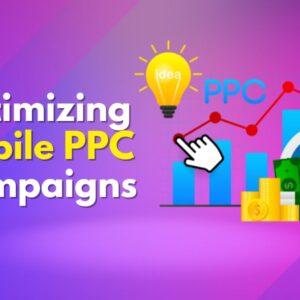Keyword research is an important step in any successful PPC campaign. Choosing the right keywords can make or break your advertising and determine whether you get in front of your target audience or not.
In 2023, there are some key secrets and strategies you need to leverage to take your PPC keyword research to the next level. With regular changes to the Google Ads platform, new techniques emerge and best practices evolve.
In this comprehensive guide, we will share the latest tips and actionable advice for researching and selecting keywords that will reduce costs and maximize ROI this year.
Why Keyword Research Matters
Before looking at specific keyword research tactics, it’s good to understand why choosing the right keywords is so important for PPC success.
Here are some key reasons effective keyword research is important:
- Reaches your best prospective customers – The keywords you target control who sees your ads and visits your site or landing pages. Choosing keywords aligned with your ideal audience ensures you bring in high-quality traffic.
- Improves Quality Score – Selecting keywords you can optimize for and closely match to ad copy and landing pages will improve your Quality Score. This leads to lower costs and better ad placement.
- Informs bidding decisions – Understanding keyword difficulty, competitiveness, and searcher intent helps guide your bids. You can focus spend on profitable keywords in your budget.
- Enables negative keyword management – Research identifies irrelevant keywords that can be added to negative keyword lists to avoid wasted spend.
- Drives conversions -Keywords that attract motivated searchers ready to take action are more likely to convert on your site. The right keywords yield customers, not just traffic.
Simply put, keywords are the backbone of your account strategy and pay dividends when done right. Now let’s get into the techniques and workflow.
Step 1: Brainstorm Relevant Keywords
The first step is generating a large list of potential keywords to target. Cast a wide net here – quantity over quality at this initial brainstorming stage.
Leverage Google’s Keyword Planner
Head over to Google’s free Keyword Planner and use the tool to find keyword ideas related to your products, services, and target customers.
Filter keywords by average monthly searches to prioritize high-volume terms. Download keyword ideas into a spreadsheet for the next steps.
Analyze Competitor Keywords
Study paid search ads from competitors advertising on keywords relevant to your business.
Look at text ads and landing pages for common keywords competitors are bidding on. Make a list of ones that seem to work well for your space rivals.
Include Long-Tail Keywords
Don’t just look at short, high-volume keywords. Long-tail keywords that are more specific also play an important role in paid search.
Tools like Übersuggest make it easy to find long-tail variants around a core keyword. Include these in your brainstorming.
Leverage Other Keyword Research Tools
Beyond Google’s own tools, 3rd party keyword research software can generate additional keyword ideas and provide key data. Here are some top tools:
- Ahrefs – Discover thousands of keyword ideas and gain keyword difficulty metrics.
- Moz Keyword Explorer – A robust database of keyword suggestions and search volume data.
- Semrush – Generate keyword ideas across PPC, SEO, and online search intent.
- KWFinder – Affordable keyword research tool that finds long-tail variants.
The goal is to brainstorm the broadest list of relevant paid search keywords as possible at this stage. Cast a wide net.
Step 2: Organize Keywords into Ad Groups
Once you have a strong list of keywords, it’s time to start organizing them into ad groups based on common themes and intent.
Create Thematic Ad Groups
Group keywords with a similar theme or customer intent into tightly themed ad groups. For example, keywords around shipping, returns, or discounts can go in separate ad groups.
Keep an ad group focused on 3-5 closely related keywords. This makes it easier to craft relevant messaging in ads and landing pages.
Separate Keywords by Match Type
Segment keywords by match type into different ad groups. Put broad match keywords in one group, phrase match in another, and exact match in a third group based on the keyword.
Match type greatly impacts how closely a keyword needs to be targeted so separating them into distinct ad groups prevents keyword cannibalization.
Use Negative Keywords
As you map keywords to ad groups, you’ll identify irrelevant keywords that you don’t want to trigger your ads. Add these as negative keywords at the campaign or ad group level to keep your account and keywords tightly themed.
Negative keywords are one of the most powerful tools for improving campaign relevancy, Quality Scores, and conversion rates.
Leverage Google’s Keyword Planner
Head over to Google’s free Keyword Planner and use the tool to find keyword ideas related to your products, services, and target customers.
Filter keywords by average monthly searches to prioritize high-volume terms. Download keyword ideas into a spreadsheet for the next steps.
Step 3: Analyze Keyword Intent & Difficulty
Now it’s time to roll up your sleeves and really analyze the keywords on your list to understand metrics like search intent and competitiveness.
Categorize Keyword Intent
Go through your keyword list and classify each keyword by searcher intent:
- Informational – Early-stage research keywords. Ex. “how does acupuncture work”
- Commercial – Product/service research keywords. Ex. “acupuncture benefits”
- Transactional – Ready to buy keywords. Ex. “book an acupuncture appointment”
Categorizing keywords helps align targeting and creative to the searcher mindset. Informational keywords may need more educational ads, while transactional ones call for special offers or calls-to-action.
Gauge Keyword Difficulty
Keyword difficulty reflects how competitive a term is to advertise on. Harder keywords require higher bids and strong landing pages to rank well.
Tools like Moz’s Keyword Explorer or Ahref’s keyword analysis provide difficulty scores to guide you. Higher competition calls for larger budgets to win top ad placements.
Identify Keyword Opportunities
Look for longer tail, low competition keywords with decent search volume. These are often more affordable keywords that can drive conversions for you.
For example, a keyword like “CRM software” will be highly competitive and difficult to rank for. But a longer tail version like “small business CRM software” offers an opportunity.
Search for Questions
Keep an eye out for keyword questions searchers ask, like “how to choose the best payment processor”. Question-based keywords signal strong intent and opportunity to answer the searcher’s query.
Step 4: Set Your PPC Keyword Budget
Now comes one of the most important parts of keyword research – assessing the potential budget for each keyword. Set realistic budgets aligned to keyword potential.
Estimate Keyword Value
Make an initial guesstimate of the conversion value for each keyword.
- What is the lifetime value of a customer from that keyword?
- How much would you pay per conversion from this keyword?
Set bids based on these estimates. Continually optimize based on performance data.
Use Historical Data
If bidding on keywords you already have performance data for, leverage that to set new bids.
- How much did you pay per conversion historically?
- What was your conversion rate?
Use proven profitable keywords to inform budgets for new, similar keywords.
Factor in Difficulty
Remember keyword difficulty from step #3. Harder keywords will require larger bids to rank well and drive conversions.
High competition keywords are opportunities to increase your budget to gain more traffic, while easy keywords allow you to bid less.
Follow Google’s Recommendations
Google’s Keyword Planner will suggest recommended bids for keywords based on difficulty and competitiveness data.
While just estimates, these can provide guardrails for your own keyword budgets based on current conditions.
Leave Buffer in Budget
Don’t spend your entire campaign budget right away. Leave room to increase bids on winning keywords and scale back poor performers.
Keyword performance will shift over time alongside market conditions. Maintain budget buffers to adapt bidding without blowing your budget.
Step 5: Monitor & Refine Based on Performance
Keyword research doesn’t end once campaigns launch. Continually monitor search term performance and refine targeting accordingly.
Review Search Term Reports
Google Ads search term reports show which keywords are actually triggering your ads along with performance metrics.
Analyze these frequently to find new relevant keywords accruing conversions and traffic. Conversely, identify irrelevant keywords to add as negatives.
Expand Match Types Slowly
Start with more exact and phrase-match keywords to maintain relevancy, then slowly test expanding matches to broad once you learn more about performance.
Broad match keywords cast a wide net so be strategic about expanding past exact match until you collect performance data.
Refine Negative Keywords
Keep building your negative keyword lists over time as you identify irrelevant terms cropping up. Add brand keywords of competitors as well to avoid unnecessary spend.
Well-managed negative keyword lists are the cornerstone to solid PPC account relevancy and conversion rates.
Track Conversions by Keyword
Pay attention to which keywords are delivering conversions and revenue vs just clicks and impressions.
Double down on proven converters by increasing budgets or expanding to broader match types while pausing poor-performing keywords.
Monitor Changes in Search Volume
keyword planner and keyword research tools provide updated monthly search volume data. Watch for shifts in keyword demand, especially in seasonal industries.
Increase budgets to capitalize on rising keywords and pull back on declining search volume keywords to maximize ROI.
Key Takeaways for PPC Keyword Research
Effective PPC keyword research takes work but pays off exponentially. Keep these core tips in mind:
- Cast a wide net to brainstorm an exhaustive list of relevant keywords. Leverage tools to find keywords competitors are missing.
- Organize keywords thoughtfully into tightly themed ad groups based on intent and match type. Avoid irrelevant overlap.
- Analyze keyword difficulty, intent, and search volume data to identify the most viable keywords to target in line with campaign budgets.
- Set keyword bids based on potential value and ROI, not just volume. Factor in difficulty and historical data.
- Monitor keyword performance closely once campaigns launch. Continually refine targeting as you learn more about what’s working.
With the right keyword research process in place, you can drive maximum ROI on PPC spend while reaching new customers.










